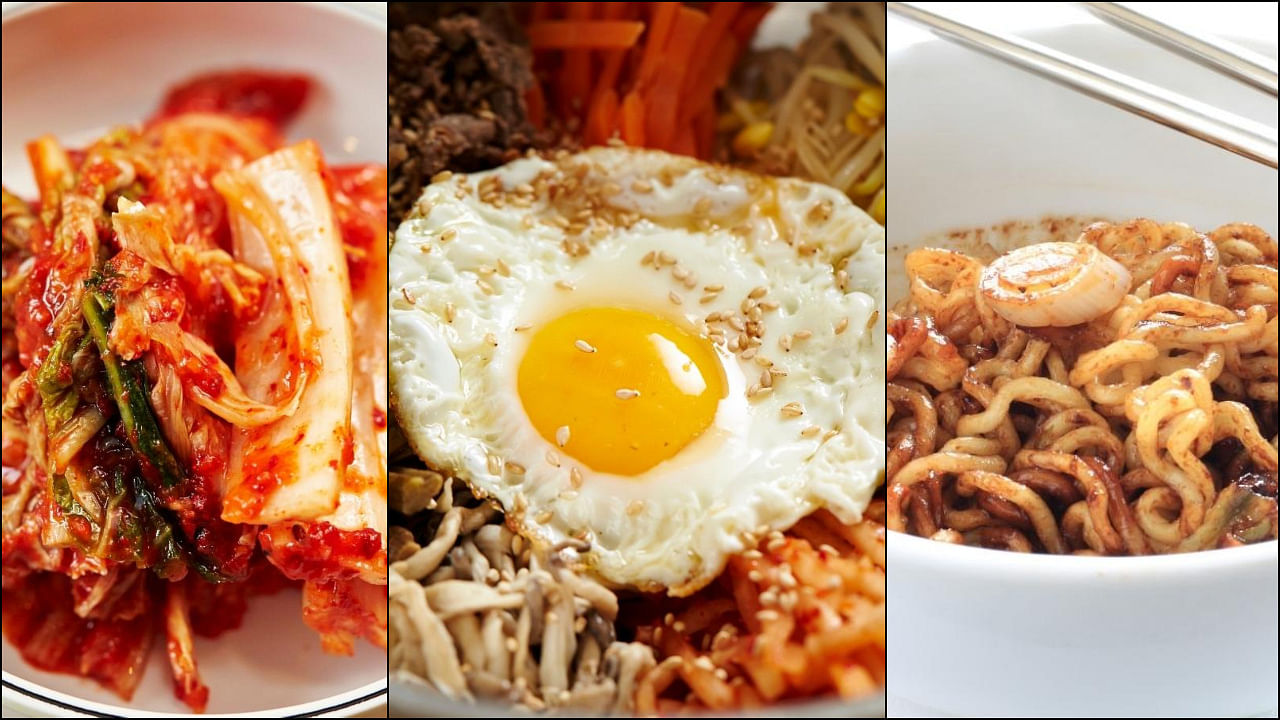
In K-dramas food often plays a very important part in the narrative. From the protagonist drowning her sorrows over some soju and Tteokbokki to friends bonding over maekju (beer) and fried chicken, half the lure of a K-drama is the copious amounts of delicious food depicted.
Here's a lowdown of all the K-drama staples like Tteokbokki and Kimchi to Jjajangmyun and rameyon.
Tteokbokki
It is next to impossible to find a Korean drama in which one of the characters isn't eating Tteokbokki at least once! It is a simmered rice cake made from small-sized garae-tteok (long, cylindrical rice cakes made with non-glutinous rice flour) called tteokmyeon or tteokbokki-tteok. Common ingredients paired with Tteokbokki are eomuk (fish cake), boiled eggs, and scallions. It is readily available at street food vendors in Korea and is often eaten when friends meet up for fun or gossip.
Jjajangmyun
Second to only tteokbokki in terms of how frequently it appears in Korean dramas, Jjajangmyun is a noodle dish in a black bean sauce known as jajangmyeon or jjajangmyeon. It's a popular Korean-Chinese dish, along with jjamppong (spicy seafood noodle soup) and tangsuyuk (sweet and sour pork or beef). Called collectively "Junghwa Yori," Korean-Chinese cuisine was developed by early Chinese immigrants in Korea. The dish is a huge part of Korean food culture. Interestingly, April 14 is an unofficial holiday in Korea called "Black Day," where singles come together to mourn by eating Jjajangmyun!
Korean fried chicken
Referred to as "chikin" in Korea, the Korean fried chicken is a broad umbrella term that includes a variety of fried chicken dishes such as the basic huraideu-chicken and the spicy yangnyeom chicken. The Korean fried chicken is usually seasoned with sugar, salt, and spices before being deep-fried. Following this, the chicken is evenly coated with a sweet and spicy sauce. Pickled radish and beer are often served on the side.
Kimchi
There is no need to even give the instance of a K-drama series to prove the quintessential nature of this lacto-fermented side dish, which can be seen almost everywhere. Traditionally made with a type of cabbage locally called "baechu," Kimchi often appears in scenes where the leads eat at home. It is a delicious classic that is easy to make and goes well with practically any food.
Bibimbap
Bibimbap, the Korean meal-in-a-bowl, is a hugely satisfying dish. It's a bowl loaded with rice at the bottom and topped with sliced beef, sautéed vegetables called "namul," and several sauces, usually soy, doenjang (a soybean paste that provides a salt and umami kick) and gochujang (chilli pepper paste adding a spicy kick). An egg is cracked on top just before serving. The hot dish is stirred together thoroughly just before eating.
Cup ramen and soju
Convenience stores in Korea form a considerable part of a Korean person's daily life. They are known for their cheap food and dine-in areas with microwave ovens, utensils, hot water, and tables. If someone feels low or tired or lazy in a K-drama, they are most likely to visit a convenience store and pick up cup ramen. A common accompaniment to cup noodles is soju, a clear, 20-24 per cent alcohol by volume (ABV) spirit. Because of its popularity in the country, soju is often called the national drink of Korea. It is the best-selling liquor in the world by volume.
(Kartikeya is a journalist from Delhi passionate about covering culture, politics, conflict, food, and human interest stories.)